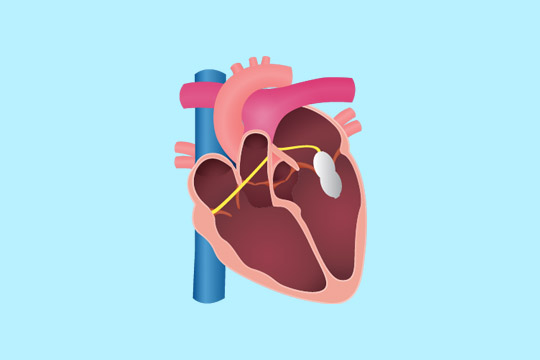Mitral Balloon Valvuloplasty

Mitral stenosis is the narrowing of the valve present between the left chambers of the heart (mitral valves), thereby blocking the blood flow.  This condition usually develops several years after a person had a rheumatic fever. Mitral stenosis is treated with balloon valvotomy, when the medications do not reduce the symptoms. If left untreated, mitral stenosis can result in various heart complications.
This condition usually develops several years after a person had a rheumatic fever. Mitral stenosis is treated with balloon valvotomy, when the medications do not reduce the symptoms. If left untreated, mitral stenosis can result in various heart complications.
Mitral valvotomy (or valvuloplasty), also known as percutaneous balloon dilation, is a minimally invasive procedure that involves widening a mitral valve using a balloon catheter, a thin, flexible tube with a balloon at the tip. This procedure improves the overall function of the heart.

What are the risks of mitral valvuloplasty?
The risks associated with percutaneous balloon dilation include:
- Blood clot formation or tears in the heart
- Backward flow of the blood (mitral valve regurgitation) due to damaged valve
- Restenosis of the mitral valve
What happens before the procedure?
Your doctor will explain the procedure in detail and provide you the opportunity to ask any questions; do not hesitate to ask any questions related to the procedure.
Your healthcare team will give you certain instructions to prepare for the procedure:
- You will be asked not to eat or drink anything after midnight, on the previous night of the procedure; you can drink water up to 4 hours of the procedure.
- A blood test may be done to evaluate the time required for the blood to clot; other blood tests may also be performed.
- You may be asked to stop taking certain medicines that may involve with the blood clotting process.
Notify your doctor if you:
- Had an allergic reaction to any contrast dye, iodine or seafood.
- Are sensitive to any medications, tape, latex, or anaesthetic agents.
- Have a pacemaker.
- Have any body piercings on the abdomen or chest.
- All the medications you are taking, including over-the-counter drugs, herbal supplements, blood thinners, etc.
- Have heart valve disease, as antibiotic drugs may be given before this procedure.
- Have a history of bleeding disorders
- Are or may be pregnant
Before the procedure, the area near the catheter insertion site (the groin area) may be shaved. Your physician may order other preparations for the procedure based on your medical condition.
How is mitral valvuloplasty performed?
On the day of the procedure, you should remove your jewellery and other objects that may interfere with the procedure. You will be asked to change into a hospital gown and empty your bladder before the procedure.
An intravenous (IV) line will be attached to your arm or hand to inject medications and administer IV fluids, if needed. You may receive a sedative to help you relax.
The following are the steps generally involved in a balloon valvuloplasty:
- A local anaesthetic is injected at the insertion site.
- Once the anaesthesia sets in, a sheath or an introducer (a plastic tube) will be inserted into the blood vessel.
- A valvuloplasty catheter is inserted through the sheath into the blood vessel. The catheter is advanced through the aorta into the heart valve. The catheter may be guided by a fluoroscopy (a special x-ray).
- Once the catheter reaches the precise location, a contrast dye is injected into the valve to get a clear image of the area.
- The balloon is then inflated and deflated several times.
- The catheter is then removed.
- The catheter insertion site is closed using a sterile bandage.
What happens after the procedure?
After the procedure, you will be moved to the recovery room. You should remain flat on bed for several hours after the procedure. Your vital signs, and circulation and sensation in the affected arm or leg, the insertion site will be monitored regularly.
Medicines may be given for pain or discomfort near the insertion site. You will be asked to drink water and other fluids to eliminate the contrast dye from your body. You can return to your regular diet after the procedure.
Mostly, you may have to spend the might in the hospital, based on your medical condition and recovery.
Your healthcare team will give you instructions to be followed after leaving the hospital:
- Keep a check on the insertion site for unusual pain, bleeding, swelling, or discoloration.
- Keep the insertion site clean and dry.
- Do not participate in any strenuous activities. Your doctor will inform you when you can resume normal activities and return to work.
Call your doctor immediately if you have any of the following:
- Fever or chills
- Severe pain, swelling, redness, bleeding or other leakage from the insertion site
- Numbness, coolness or tingling sensations in the affected extremity
- Pain or pressure in the chest, nausea or vomiting, sweating, or dizziness
- Reduced urination
- Swelling of the abdomen or extremities
- Over 3 pounds weight gained in a day

